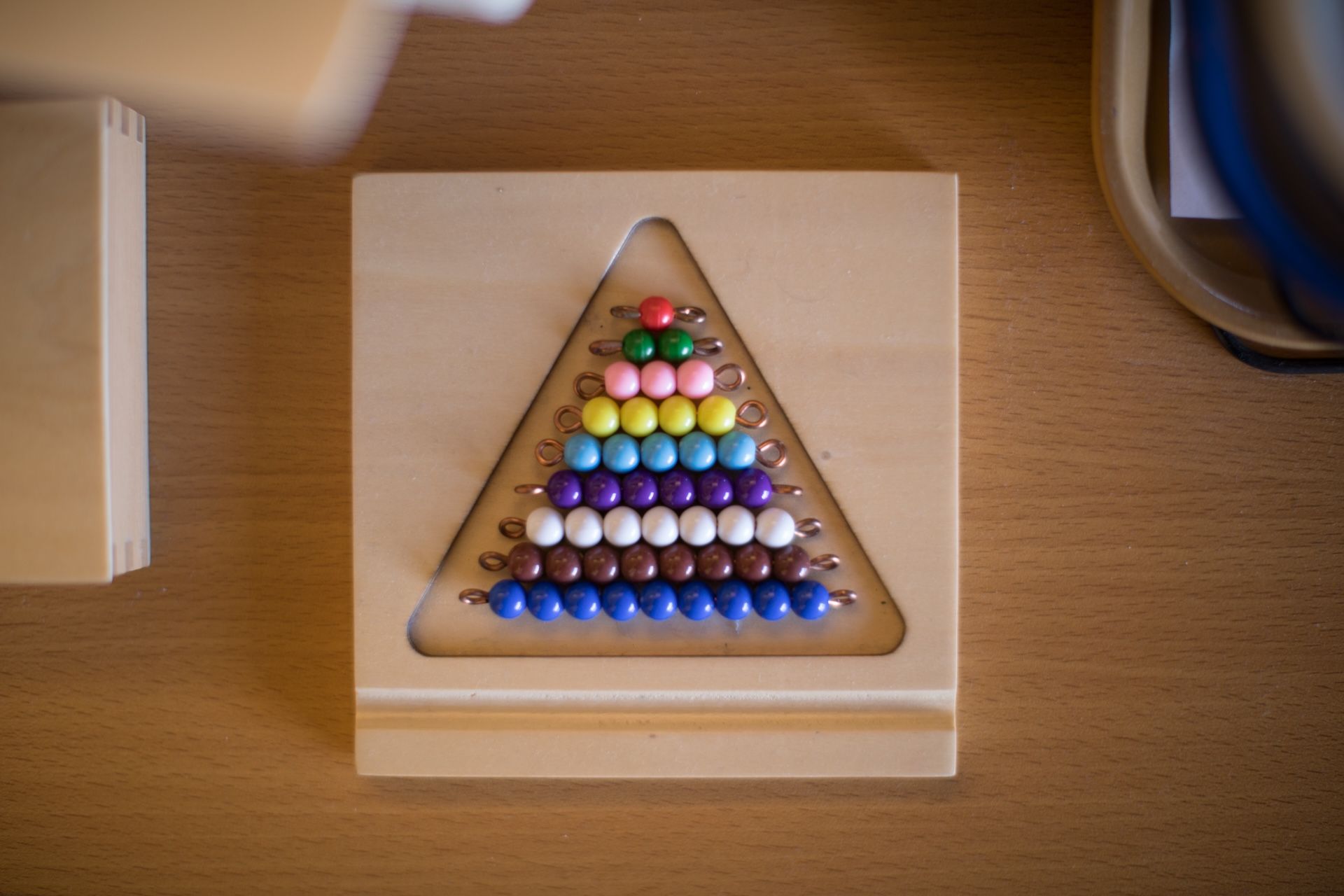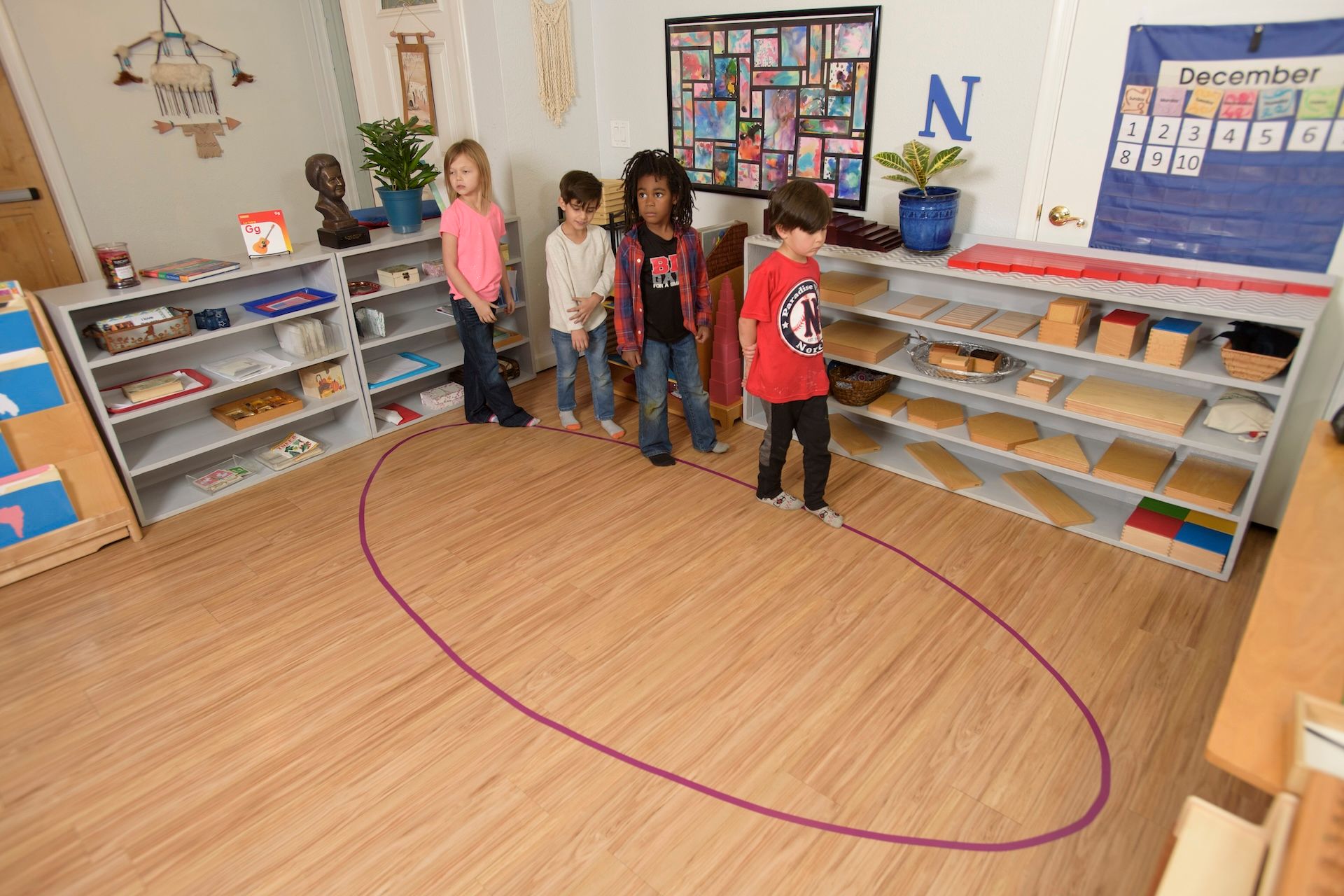When we provide children with an environment designed to encourage their independence, children are quite capable of doing things by themselves. Even at home, you can provide an environment that builds children's confidence and encourages independent learning, just like we do at Montessori school. You also don't have to spend vast amounts of money on toys, electronic gadgets or educational material to turn your home into a learning environment.

Montessori Learning In The Kitchen
Provide your children with a safe, sturdy stool so they can reach counter tops and the sink, as well as any cooking utensils and cleaning supplies they'll need. Designate a lower shelf in the pantry for your child so they can reach crackers, nuts, dried fruit, cereal and other healthy snacks when they get hungry. Also include napkins, forks, plates and drinking cups in an easily accessible location. If your child can reach the table settings, that will also make it easier for them to help set the table for dinner.
Make sure your child can clean up after themselves as well. Provide a sturdy stool near the sink and place dish soap and a sponge or washcloth within reach so they can help with dishes. This is also a great time for practical learning. Teach them the difference between hot and cold water, and how to test the water temperature. Dishwashing also develops movement control and encourages the discipline required to complete tasks well.
Montessori Learning Around The House
Letting your kids help with sorting clothes is a teaching moment and a big help for mom. The skills children learn sorting socks by matching colors and designs are preliminary reading skills – recognizing the patterns in the socks will help when they need to recognize patterns in words.
Washing windows is another chore kids enjoy helping with that will teach them basic skills. The motor coordination required to wash windows helps with tasks like writing. Make sure your children have a sturdy stool so they can reach windows without falling, and don't let them wash any windows tall enough that they'd need a ladder.
Montessori Learning At Play
Give children opportunities to exercise their imaginations in a way that applies to the real world. Create a dress-up area with pants, skirts, shirts, hats, scarves, shoes and other clothing items that will let children imagine themselves as a real person. Similarly, offer books with photographs of the real world so children can learn about other children, different animals, and locations around the globe. Children will develop a richer vocabulary and learn about how other people live at the same time.
Avoid throwing a large assortment of toys into one big toy box. Children interact with their toys best when there are only three or fewer types of toys in the playroom, each in their box. You probably don't like it when things in your environment are cluttered, and kids don't either. Keep building blocks in one container, dolls in another, musical toys in another and so on. This makes it easier for kids to focus on one thing at a time and learn more easily.
Final Thoughts
For any learning activity you're setting up at home, keep these three things in mind:
- Child's age – base your preparations on the child's age and height, such as making sure a stool is available if they aren't tall enough to reach a countertop.
- Time – kids can't be rushed through an activity. They need time to discover, engage and enjoy themselves. Try not to interrupt them.
- Environment – prepare the environment before the child gets there so they won't be frustrated by missing items that would prevent them from succeeding.
Hours
MONDAY - FRIDAY
HALF DAY: 8:30a – 12 noon
ACADEMIC DAY: 8:30a – 3:30p
EARLY CARE: 7:00a – 8:30a
AFTER CARE: 3:30p – 6:00p
OFFICE: 8:00a - 4:00p
Programs
Connect
Pebblecreek Montessori




